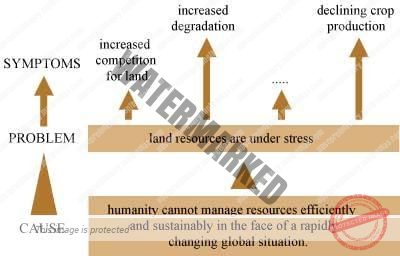- AVAILABILITY OF LAND
- PRESSURE OF POPULATION
UNIT 7 – ENVIRONMENTAL POLLUTION – PART 4
- AVAILABILITY OF LAND
FAO estimates that a gross area of approximately 2.5 thousand million ha of land in the developing world has some potential for rain-fed agriculture, although two-thirds of the land are rated as having significant constraints due to topography or soil conditions, while not all of this land is available for agricultural production (Alexandratos, 1995).
Land is becoming more and more scarce as a resource, and this is particularly true of land available for primary production of biomass or for conservation related purposes. Competition for land among different uses is becoming acute and conflicts related to this competition more frequent and more complex.
This competition is often most apparent on the peri-urban fringe, where the continuing pressures of urban expansion compete with agricultural enterprises, and with recreational demands. Such situations frequently lead to rapid increases in the economic value of land, and land tenure becomes an important political issue.
- PRESSURE OF POPULATION
Growth in total population over the past 50 years has been matched by a relative increase in the urban population at the expense of the rural population. The impact of this trend is two-fold. On the one hand, movement of people to the cities may reduce the absolute pressure on land for agriculture while stimulating the market for producers.
On the other hand, production of primary products such as food, fibre and fuel must be produced from a diminishing land area by a diminishing relative population, while urban expansion reduces the total land available for agriculture. A further factor is the disproportionate migration of economically active males to the towns, leaving women, children and the aged to shoulder the burdens of agriculture.
The situation is frequently exacerbated by government policies of urban bias, such as cheap food prices which favour the urban dwellers and their employers, but often penalize the food producers, who are commonly a less organized and less vociferous political constituency. Urbanization due to population growth and migration effects has also promoted a growth in per caput consumerism which has further increased the demands on land resources.

